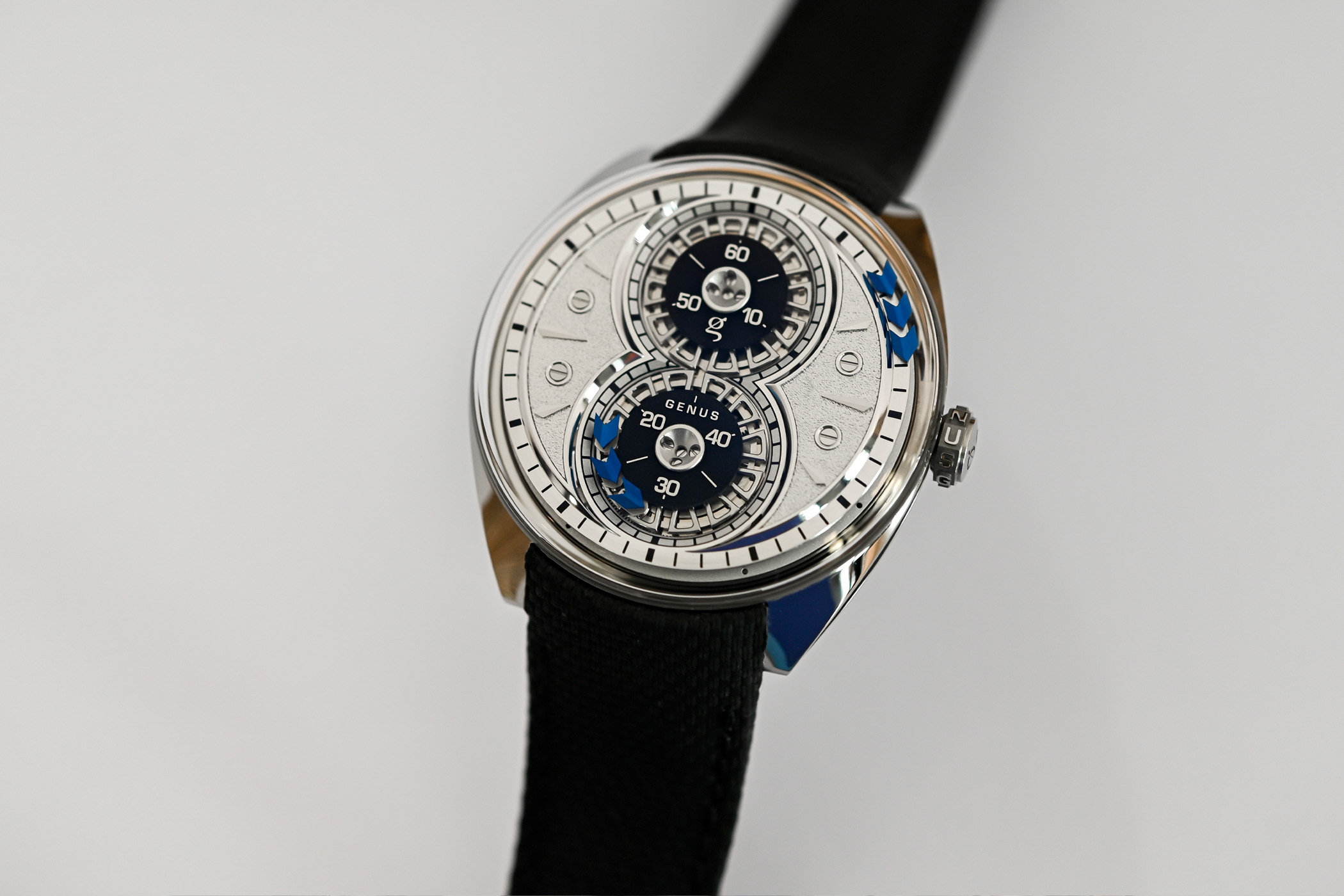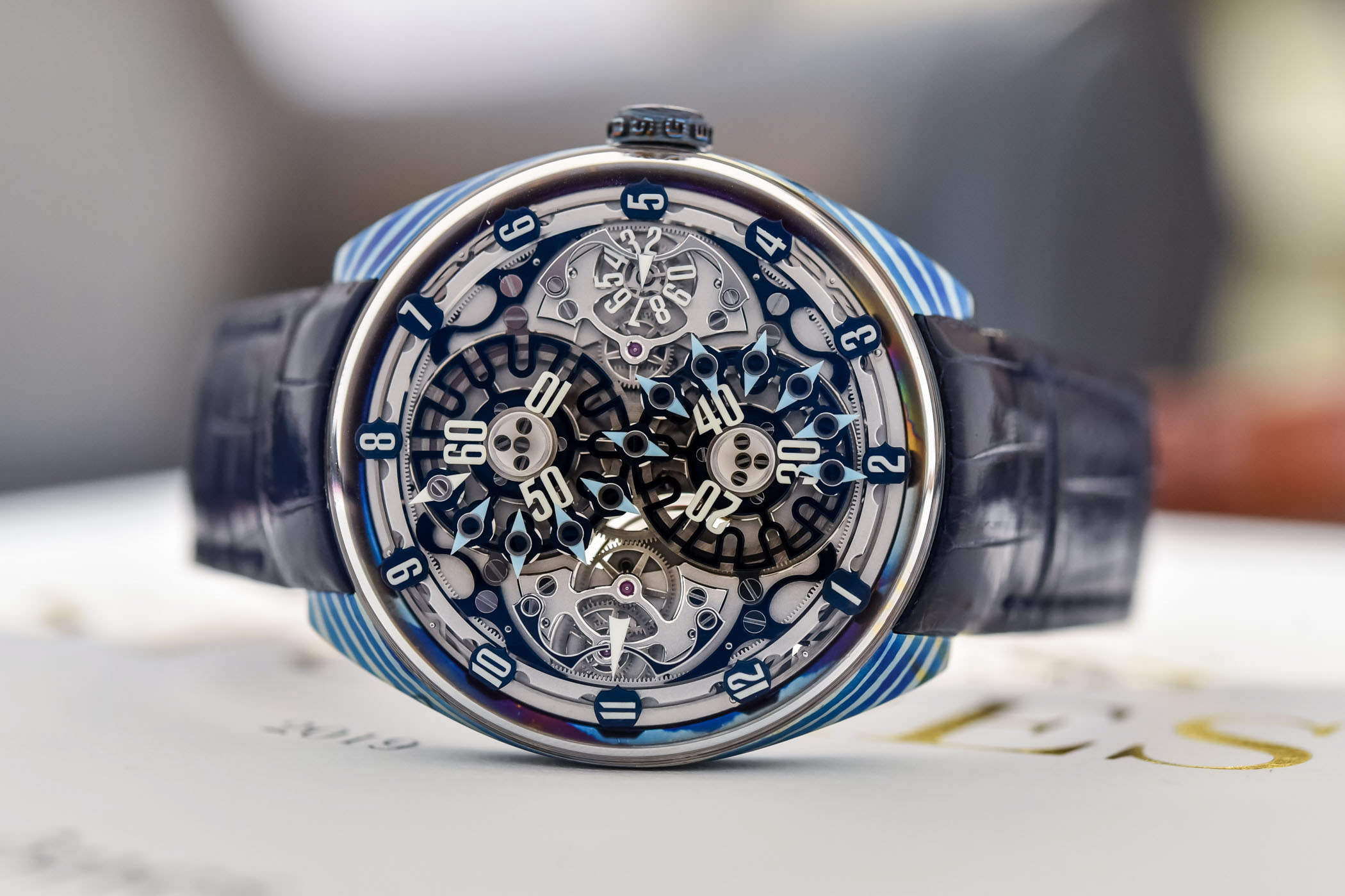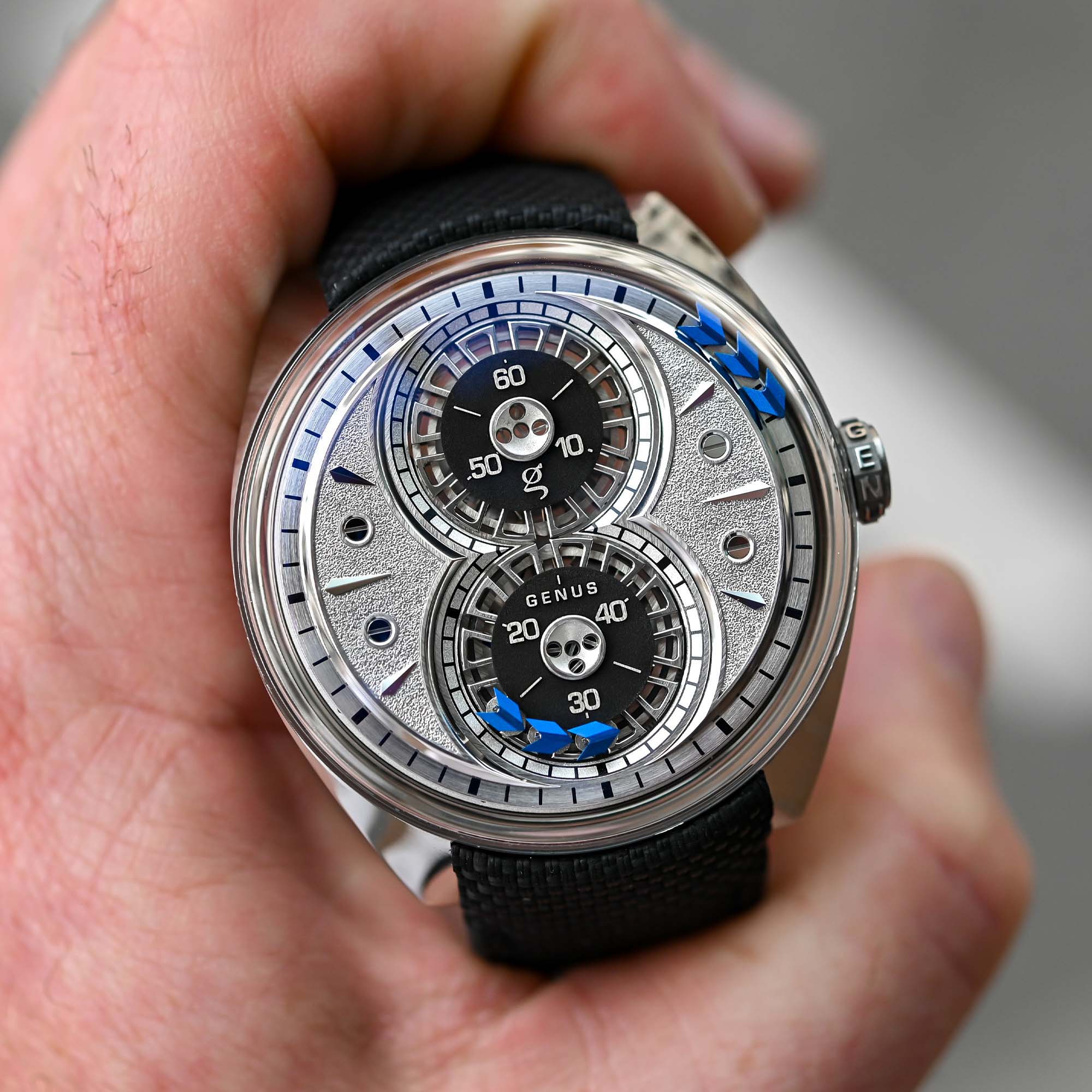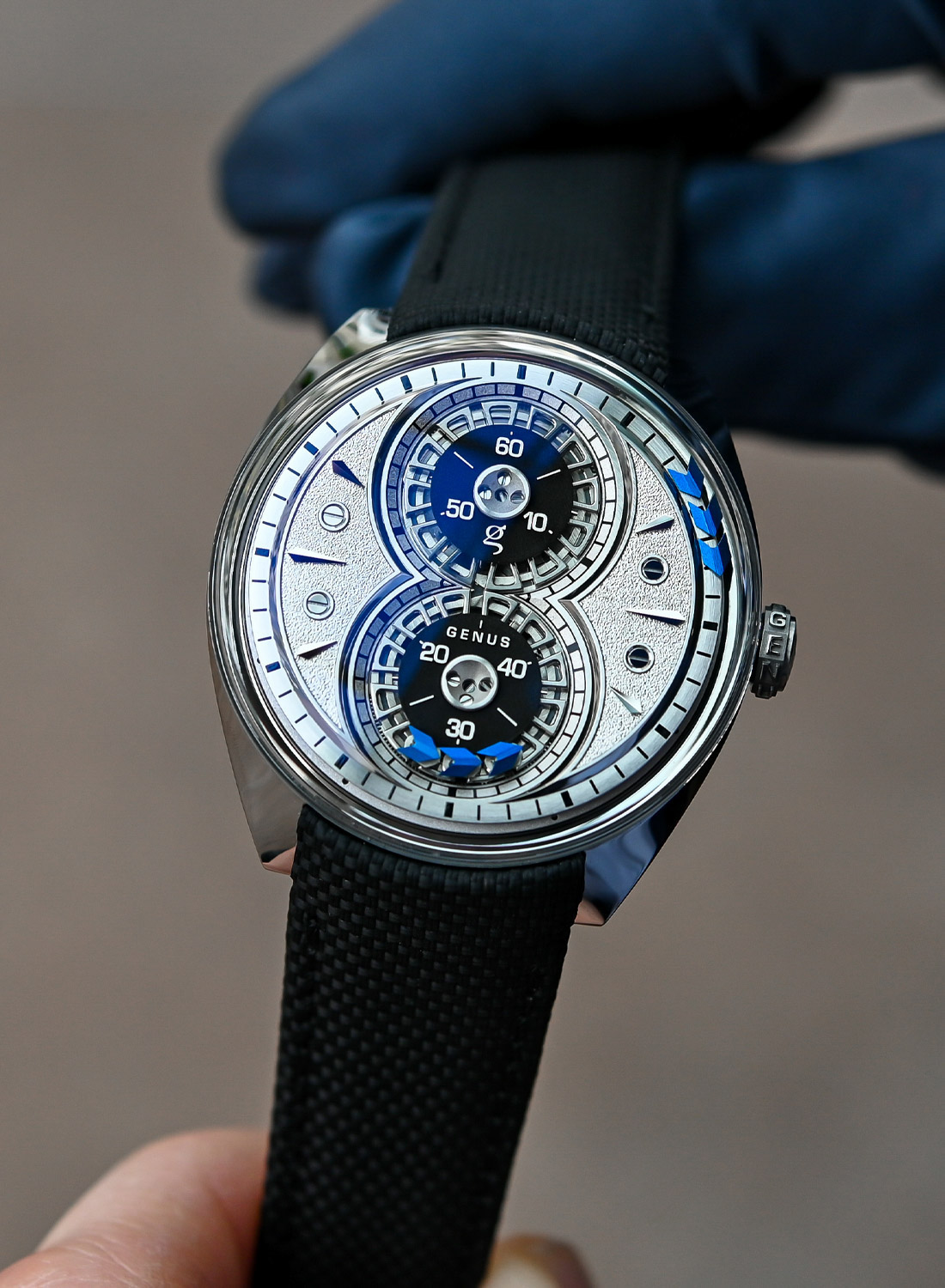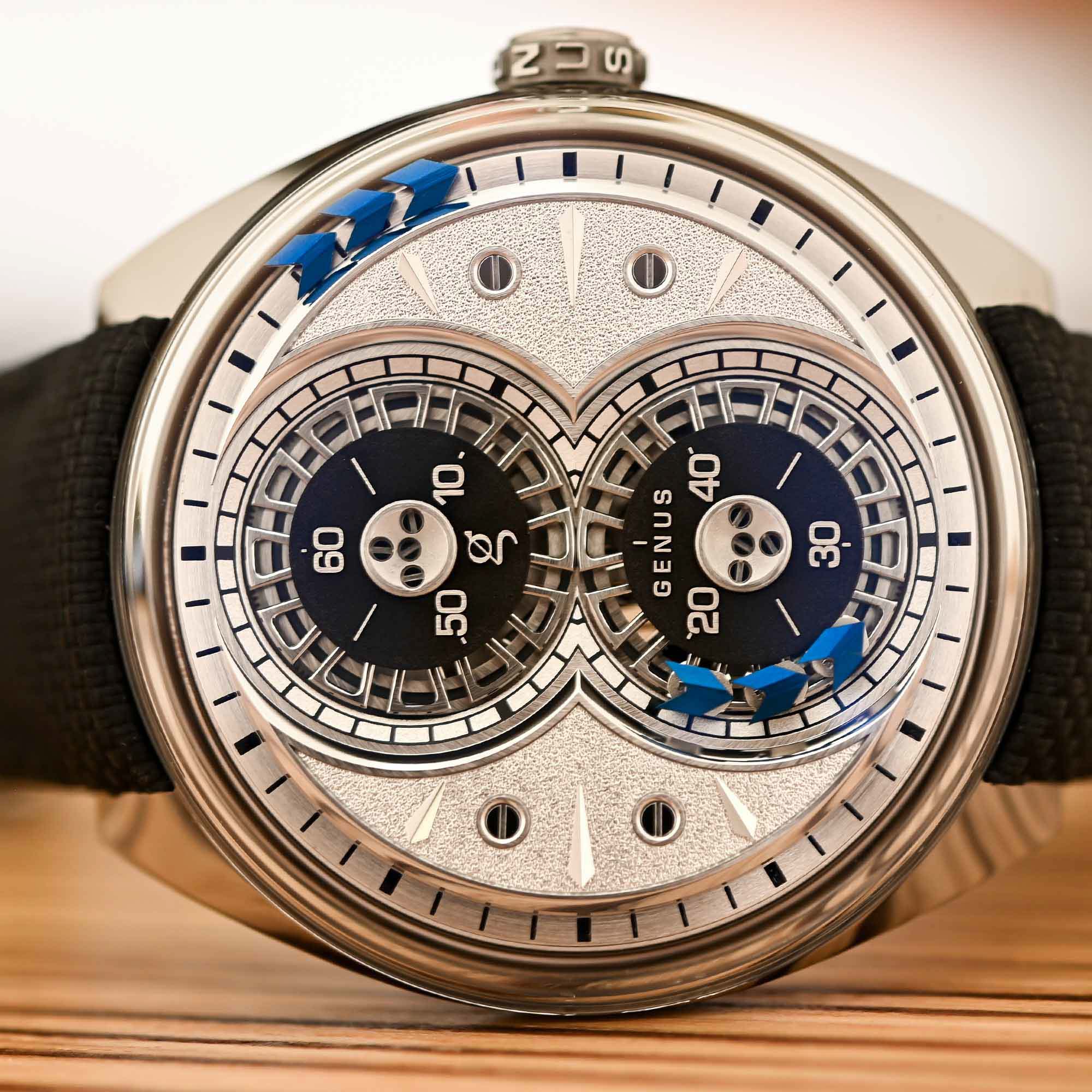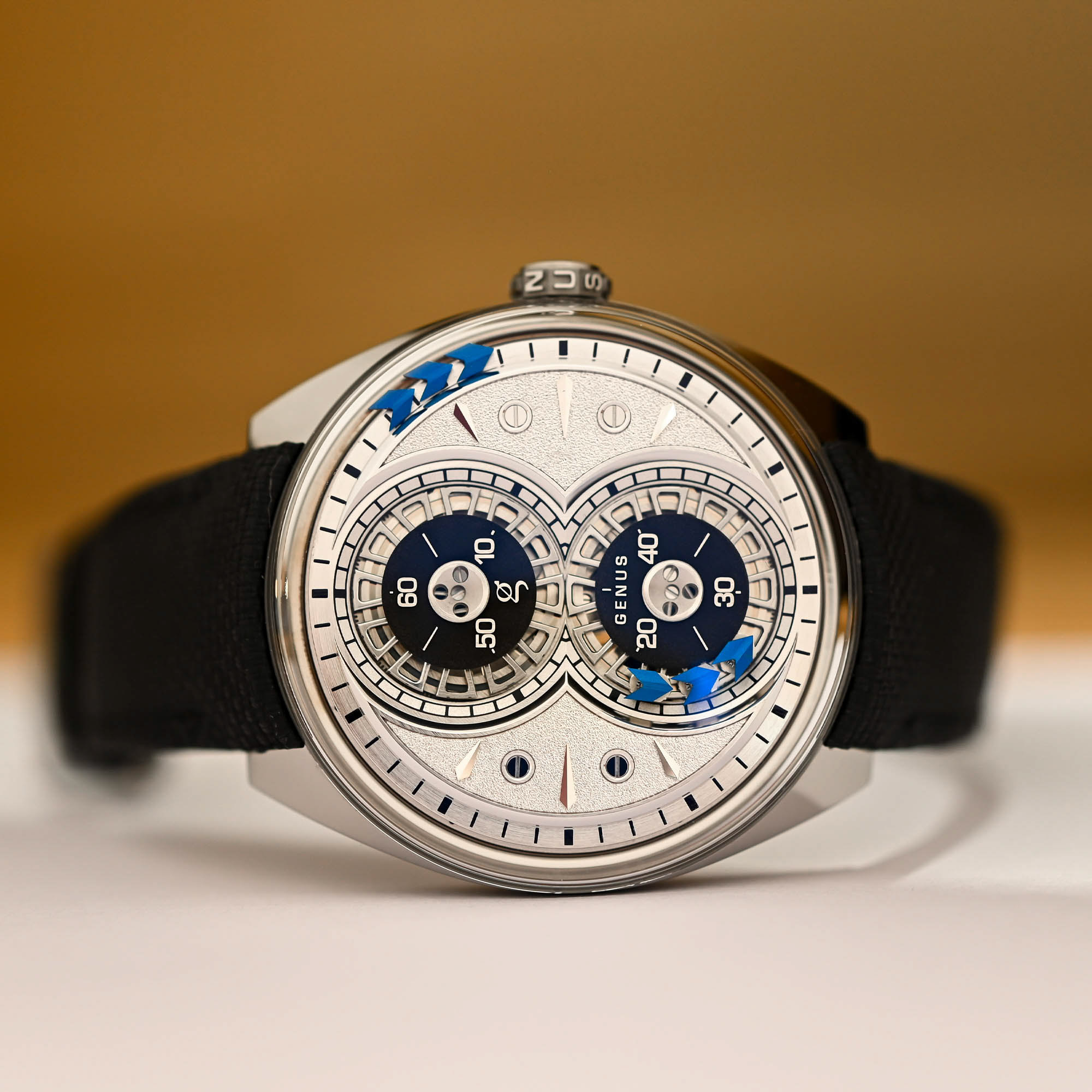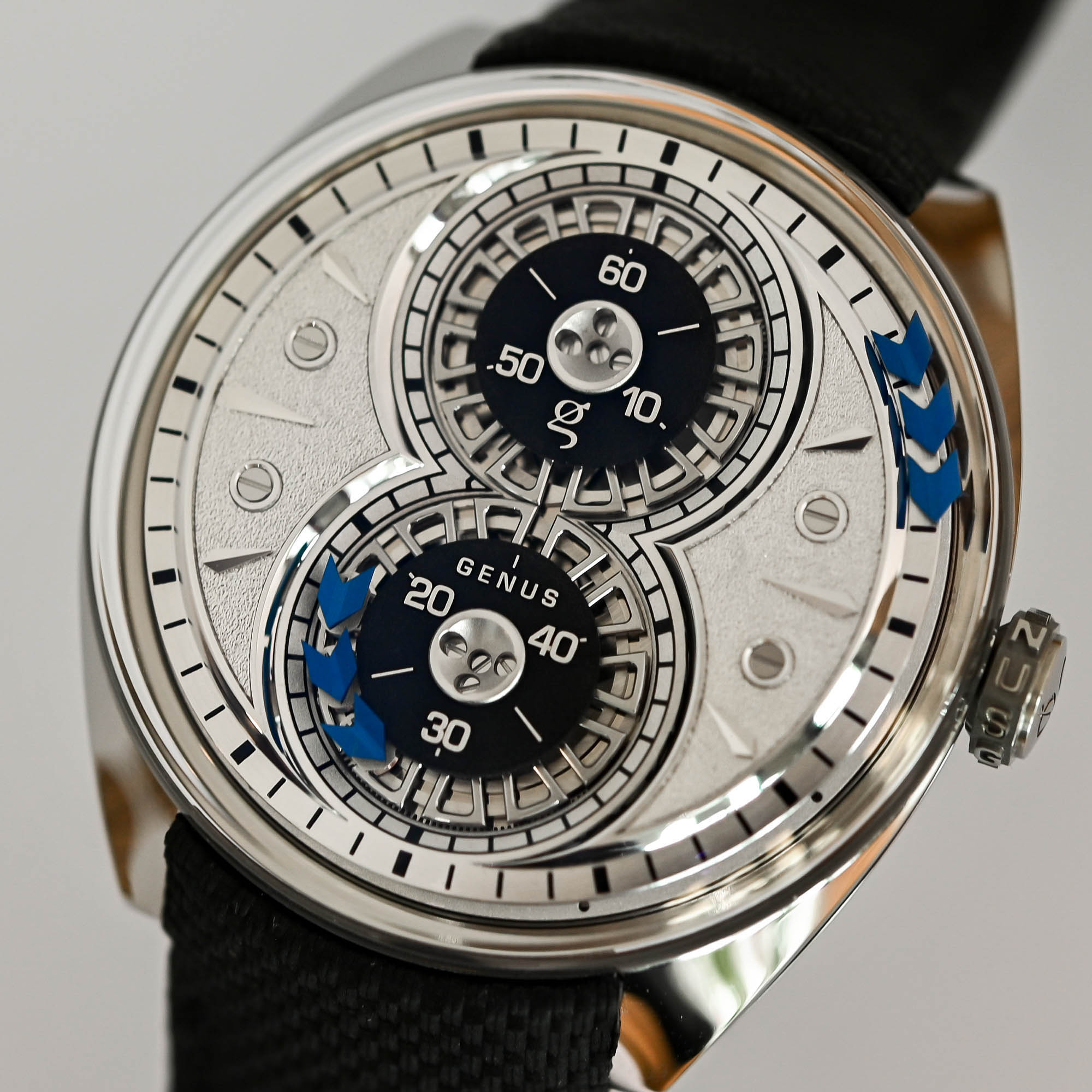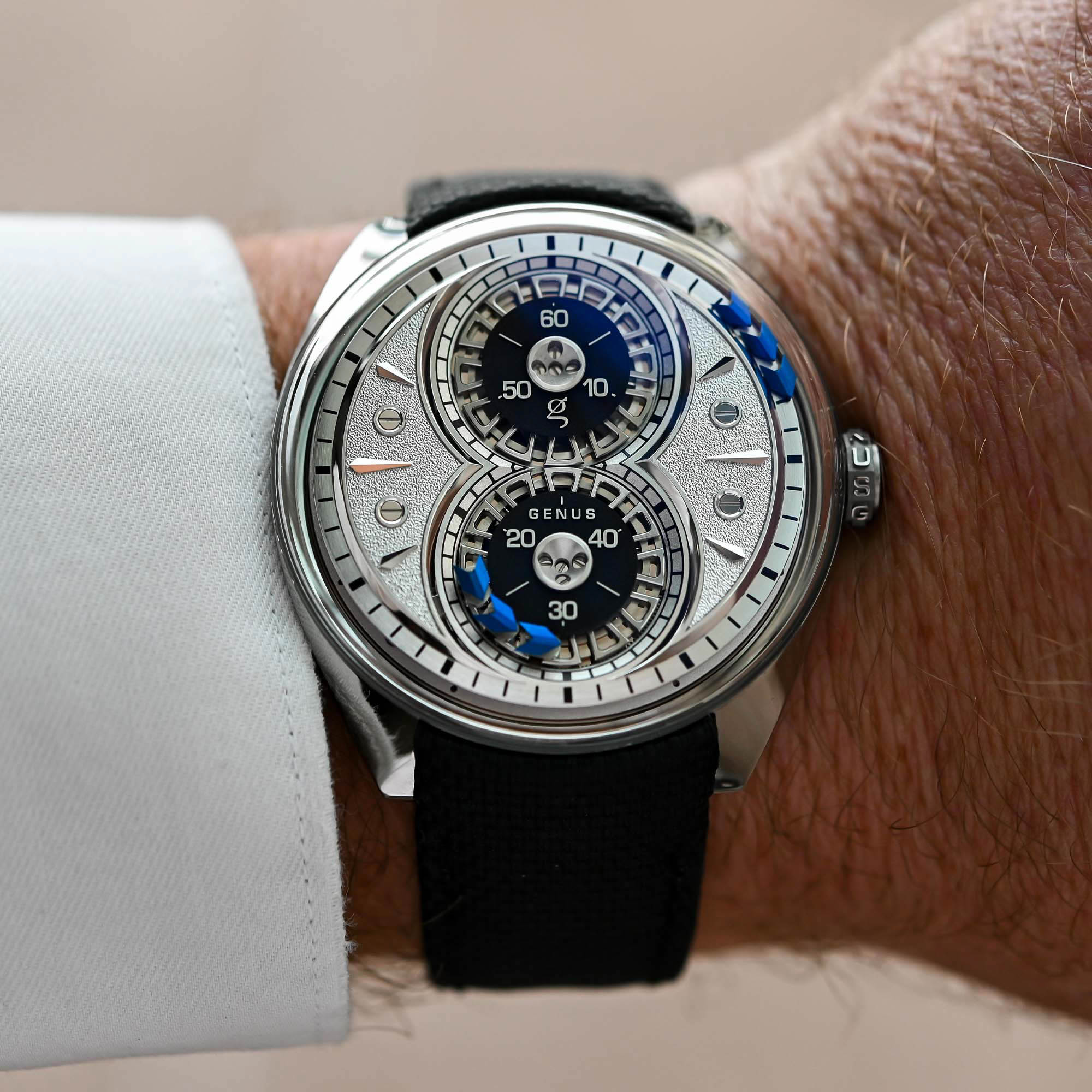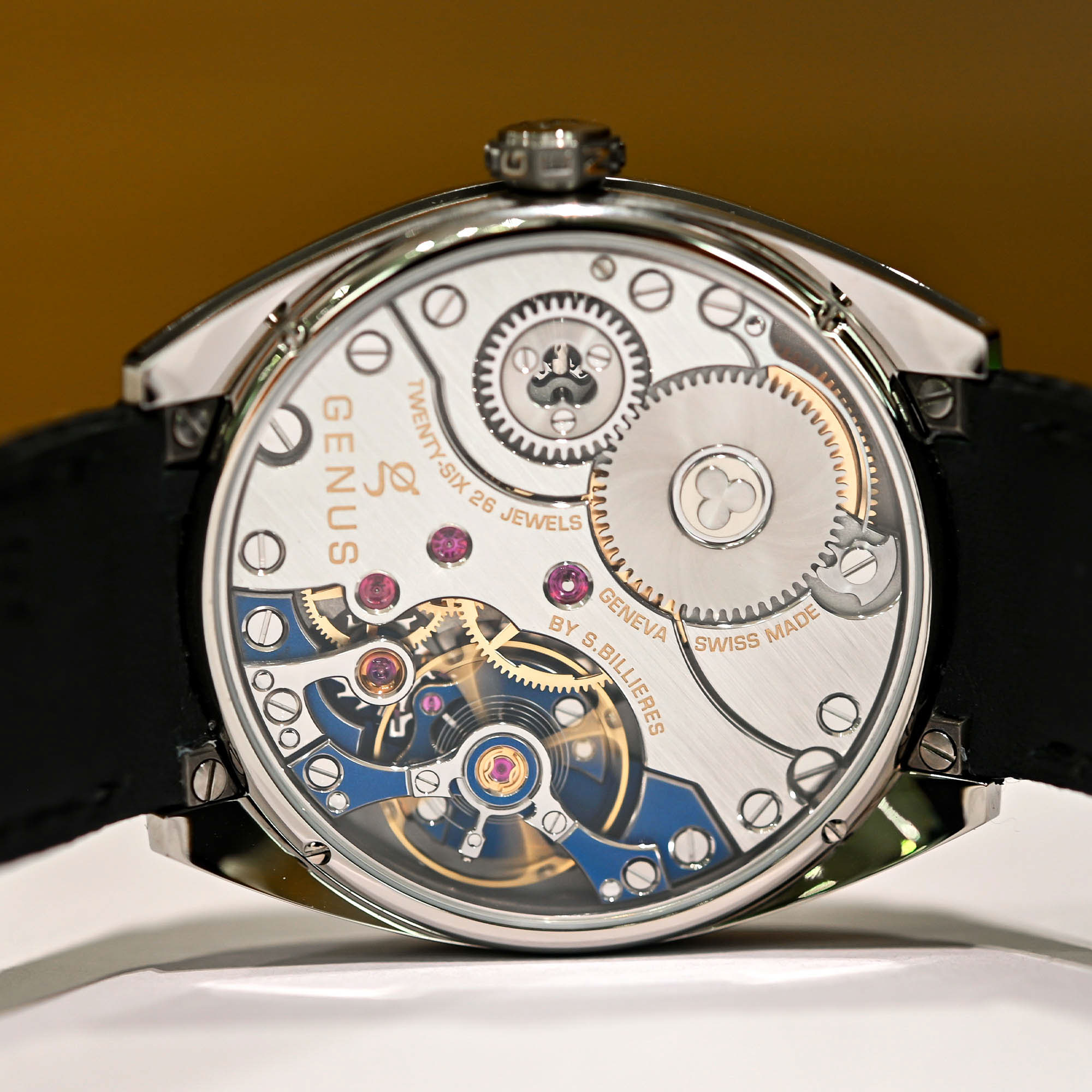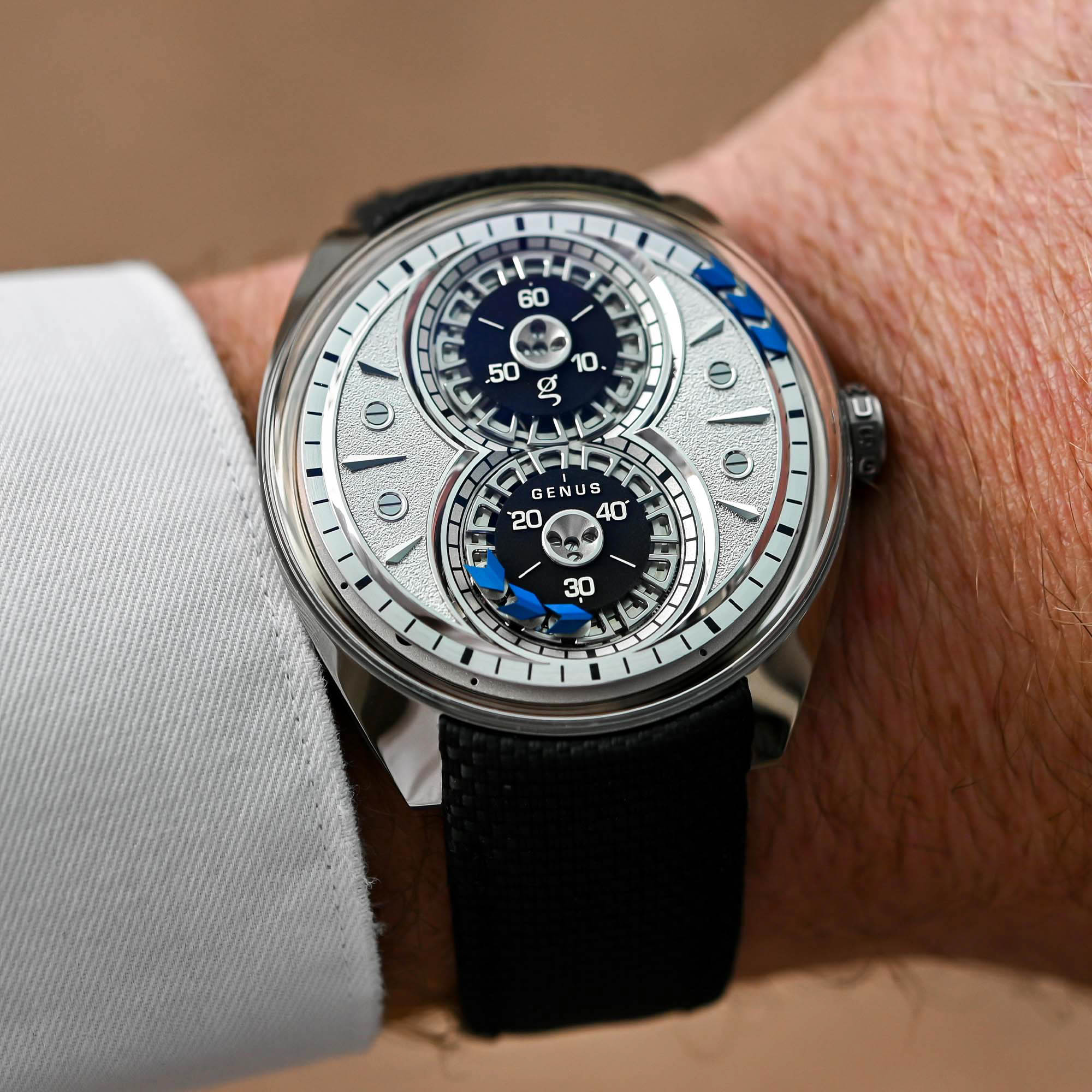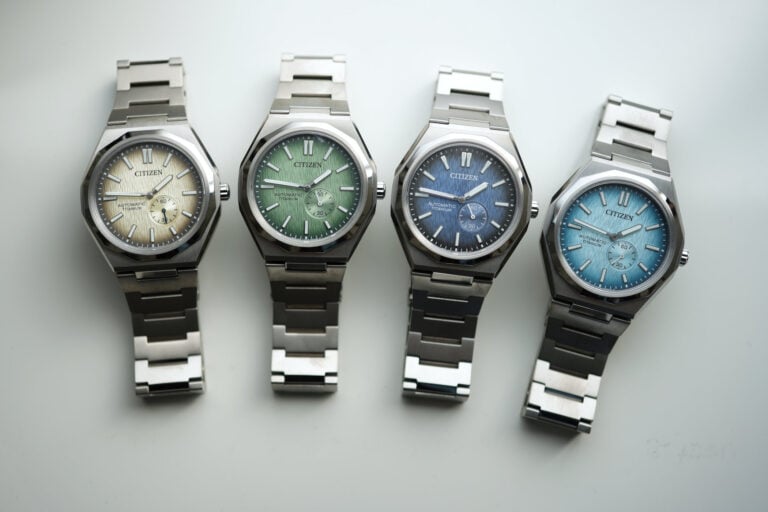The Genus GNS2, Sleeker but Still Mechanically Fascinating
Taming the mechanical extravaganza for enhanced legibility and wearability.
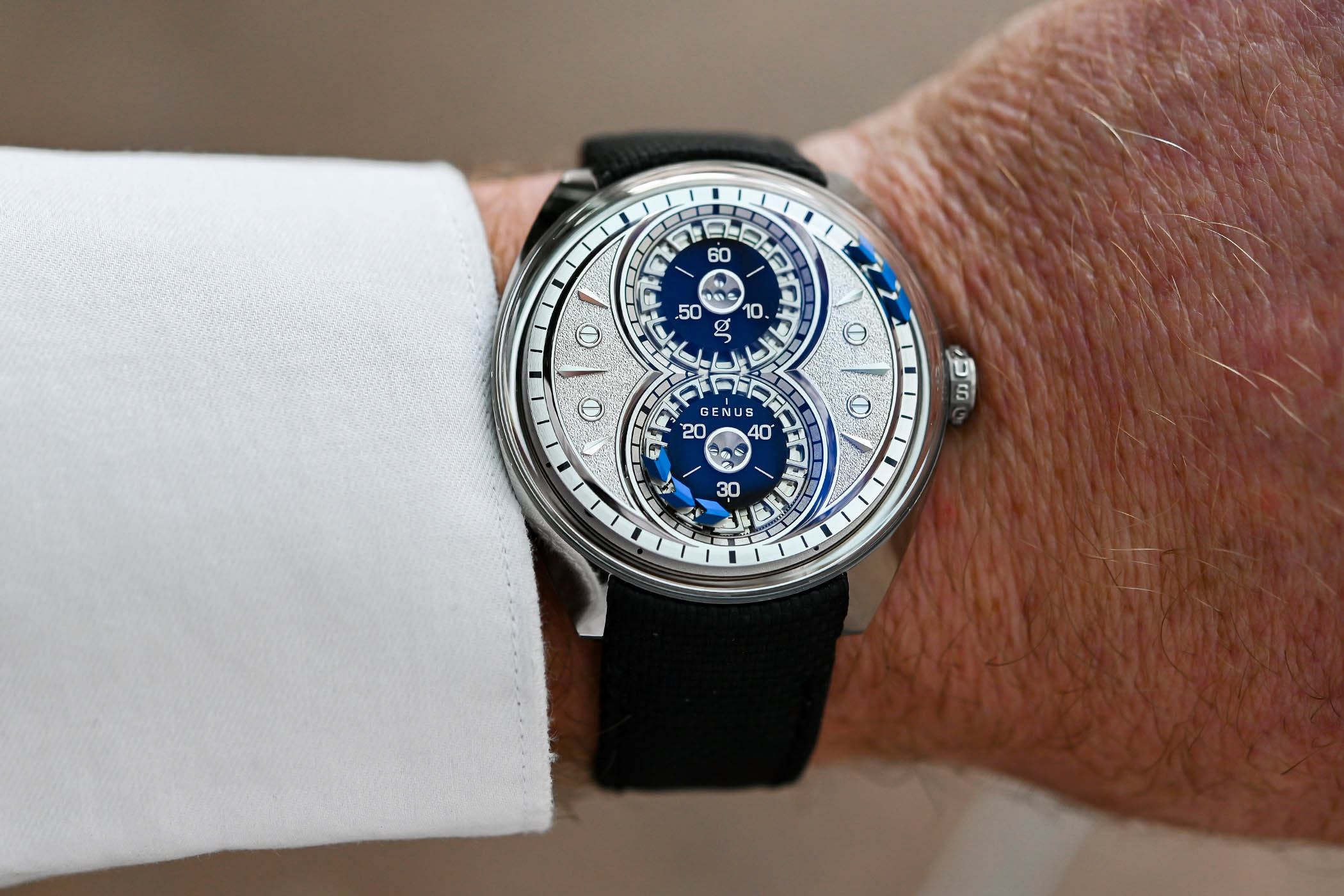
A masterpiece of ingenuity and complexity, the GNS1 dazzled the watchmaking scene with its incredible free-moving train travelling around the two central counters on the dial like a mechanical caterpillar. Marking the indie brand’s debut in 2019, the GNS1 was ten years in the making and protected by two patents. Earlier this year, Genus introduced the GNS2, a follow-up model designed to simplify the display and lighten the case. Now fitted with a closed dial and two separate and shorter trains, the question is whether this exercise in style results in a more legible, streamlined and ultimately more wearable watch.
The First GNS1
Genus Watches is a collaborative venture between entrepreneur Catherine Heny and watchmaker Sébastian Billières and was founded in 2019. The first opus to emerge from Genus, the GNS1, is a veritable mechanical extravaganza, relying on an ingenious mechanical train/free-moving element circling the two tens-of-minute counters in the centre of the dial to form a figure eight. For more accurate readings, the train is complemented by a rotating counter at 3 o’clock with single digits and an arrow. The hours are represented by satellite markers placed on the periphery that advance and pivot to face the wearer when they reach the fixed pointer at 9 o’clock.
Another feature of the GNS 1 is its openworked dial, revealing a mind-bogglingly complex panorama of mechanical hardware in the form of bridges, levers and wheels. However, there was one problem with the first GNS models – even the ones with colourful gemstones and the occasional Chinese dragon snaking around the dial – and this was that they were not easy to read.
The New Genus GNS2
While the mechanical brain of the GNS2 is the same as the GNS1, these are two very different beasts. Now featuring a closed dial, the visual complexity of the GNS1 is tamed. In its place is a simpler, more serene and symmetrical symphony dominated by a central figure eight, a leitmotif at Genus.
Instead of the sprawling landscape of mechanical components, the dial’s closed hand-hammered areas actually enhance the viewing pleasure by highlighting the central figure eight, which houses the tens-of-minute discs that rotate in opposite directions.
The 12-bodied caterpillar (genera) of the GNS1 has been shortened to three bodies with metallic blue arrows on its back. It still performs its spectacular figure-eight procession around the counters, but one thing lost in translation is the separate single-digit counter for exact minute readings (the brand insists that the leading arrow in the procession indicates the exact minute, but it is not as precise). This also means that there is less movement on the dial, but that is a good thing.
The rotating and pivoting hours have also been axed in favour of fixed indices on the dial. These are indicated by a second 3-bodied mechanical train with blue arrows circulating around the peripheral track.
Simpler, highly symmetrical and infinitely easier to read, the GNS2 also plays with textures, reliefs and light. The two crescent-shaped areas embracing the central figure eight are decorated by hand with a lovely, hammered texture (a bit like AP’s frosted gold). The applied hour markers, the contours of the hammered crescents, and the spokes of the central counters are all polished, and the four screws are mirror-polished by hand to become an integral part of the scenery.
Using an elegant monochrome palette of greys, colour is used sparingly. Blue is used for the origami-style arrows on the backs of the caterpillars, and black for the smaller discs hosting the tens of minutes in relief.
Streamlined Case
The Genus GNS2 shares the 43mm diameter of earlier editions and the large crown with raised GENUS letters, but its featherlight titanium case now features hollowed sandblasted flanks that visually lighten the load. Fitted with a specially developed glass-box sapphire crystal without edges to obtain an undistorted view of the peripheral hour train and maximise the dial opening, the downside is that the case height is a whopping 18.8mm.
New Calibre 260Rh-2
While the GNS2 relies on the same mechanical brain as the GNS1, it is no longer exposed on the dial and the view from the caseback reveals some aesthetic tweaks. The movement is divided into two parts: one part is dedicated to energy and transmission, and the second to energy distribution and regulation. The new calibre is still equipped with just one barrel with an impressive 50-hour power reserve – given the complexity of the calibre and the moving masses – and each component of the movement has been designed by Billières and decorated by hand, with a little help from his sister, Sarah. The regulating organ now stands out with its blue surfaces, and you can appreciate the intricately snailed ratchet wheel and the mirror-polished finishings.
Thoughts
In answer to our initial question, we have to conclude that the “less is more” strategy applied to the Genus GNS2 is a winner. With its closed dial and tight symmetry, the legibility has increased exponentially. Although the case is more streamlined thanks to the hollowed flanks, the towering sapphire crystal might need getting used to in everyday situations to avoid blows. It is still a devilishly complicated beast, but hiding some of the watchmaking wizardry results in a more versatile and contemporary timepiece.
The GNS2 is a limited edition of 18 pieces and retails for CHF 58,200 / EUR 61,360 (all prices excluding taxes). For more information, please consult genuswatches.swiss.

